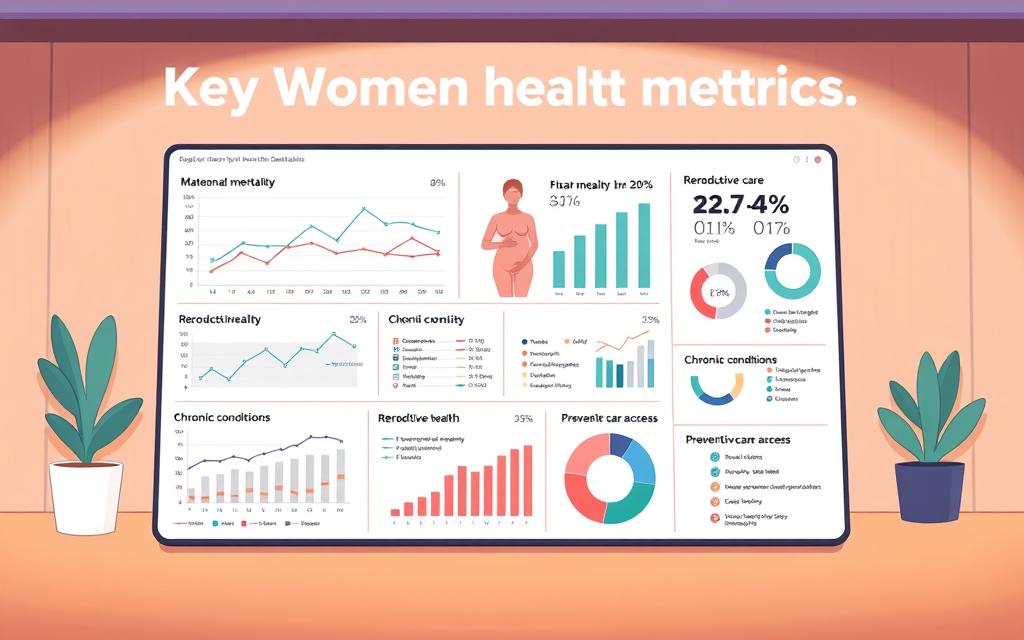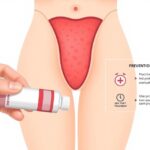Non Sexually Transmitted Diseases: Symptoms, Causes, and Treatment
Many health issues develop without sexual contact yet significantly impact well-being. Bacterial, fungal, and viral agents often cause these conditions through everyday exposure. Women frequently experience vulvar infections ranging from mild skin irritations to severe tissue complications.

Proper diagnosis requires understanding how these infections differ from sexually transmitted ones. Healthcare providers emphasize that causes include poor hygiene, compromised immunity, or environmental factors. For example, bacterial folliculitis might stem from tight clothing, while fungal growth thrives in moist areas.
Early detection improves outcomes. Redness, itching, or unusual discharge often signal the need for medical evaluation. Severe cases may involve fever or spreading inflammation requiring urgent care. Treatment typically combines medications with lifestyle adjustments to prevent recurrence.
Public health data shows these conditions affect diverse age groups and demographics. Education about preventive measures reduces both infection rates and social stigma. Regular check-ups and open communication with healthcare professionals remain vital for maintaining wellness.
Key Takeaways
- Various microorganisms cause infections through non-sexual transmission
- Vulvar health issues range from mild irritations to serious complications
- Timely symptom recognition prevents severe medical outcomes
- Treatment plans often combine medication and preventive strategies
- Demographic factors influence infection risks and prevalence rates
- Patient education reduces stigma and improves prevention efforts
- Sexually Transmitted Fungal Infection: Causes-Symptoms-Treatment
- Sexually Transmitted Diseases in Nursing Homes
Introduction to Non Sexually Transmitted Diseases
Common genital health concerns often stem from environmental factors rather than physical intimacy. These medical issues develop when naturally occurring microorganisms overgrow or enter vulnerable areas through daily activities. Proper classification helps patients receive appropriate care without unnecessary stigma.
Core Concepts and Medical Classifications
Healthcare professionals define these conditions by their origin rather than symptoms. Unlike communicable illnesses spread through human interaction, they originate from imbalances in personal ecosystems. Yeast overgrowth in warm environments and bacterial shifts due to hygiene changes exemplify typical causes.
Identifying Distinct Infection Pathways
Medical teams use specific criteria to separate these cases from those requiring partner treatment. Diagnostic tests analyze infection sources rather than assuming sexual transmission. For example, recurring urinary tract issues might indicate anatomical factors rather than contagious pathogens.
Treatment plans differ significantly based on transmission routes. Antibiotics for bacterial imbalances target specific strains without broader precautions. Education helps patients understand prevention through moisture control and proper cleansing techniques rather than behavioral changes.
Epidemiology and Impact on Women’s Health
Millions of American women face preventable health challenges annually from conditions unrelated to intimate contact. These infections create substantial burdens through medical costs, missed workdays, and reduced quality of life. Geographic disparities reveal higher rates in areas with limited healthcare access.

US-Specific Statistics and Trends
Bacterial vaginosis leads vaginal health issues, affecting 1 in 3 women aged 15-44. Recent studies show Staphylococcus aureus colonization jumped from 30% to 40% between 1980 and 2005. Menstrual toxic shock syndrome occurs in 0.03-0.5 cases per 100,000 people annually, with 8% proving fatal.
| Condition | Prevalence | Mortality Rate | Trend |
|---|---|---|---|
| Bacterial Vaginosis | 21 million cases/year | N/A | Stable |
| Toxic Shock Syndrome | 0.5 per 100k | 8% | Declining |
| Staph. aureus Colonization | 40% of women | N/A | Rising |
Southern states report 18% higher infection rates than the national average due to humidity and socioeconomic factors. Ethnic Indigenous peoples experience disproportionate impacts – Black women have 50% higher BV rates compared to other groups.
Public health initiatives now prioritize tracking these patterns through CDC surveillance systems. Early intervention programs could save $2.3 billion yearly in treatment costs and lost productivity.
Clinical Symptoms and Signs
Recognizing physical changes helps identify health issues needing medical attention. Vaginal discharge appears in 75% of symptomatic cases, varying from milky white to gray depending on the infection type. Some patients report a distinct fish-like odor after intercourse, while others experience persistent itching around sensitive areas.
Nearly 50% of bacterial vaginosis cases show no noticeable symptoms, making regular check-ups vital. When present, discomfort often includes burning during urination or tenderness during daily activities. These signs frequently overlap between yeast infections and bacterial imbalances, requiring professional evaluation.
Severe infections may trigger systemic responses like fever or swollen lymph nodes. Acute cases develop suddenly with intense irritation, while chronic conditions might worsen gradually over weeks. A patient’s symptom timeline helps clinicians distinguish between temporary imbalances and recurring issues.
Healthcare providers analyze discharge texture, odor patterns, and irritation locations during assessments. This approach determines whether treatment requires antifungal creams, pH-balancing gels, or antibiotic regimens. Early intervention prevents complications and improves daily comfort for those affected.
Non sexually transmitted diseases: Overview of Conditions
Many health challenges develop through everyday exposures rather than intimate contact. These conditions stem from bacterial imbalances, environmental factors, or anatomical vulnerabilities. They affect multiple body systems, with causes ranging from fungal overgrowth to parasitic interactions.

Bacterial vaginosis tops the list of vaginal health concerns. It occurs when natural flora get disrupted, not from a single harmful organism. This imbalance often leads to discomfort and requires targeted treatment.
Yeast infections frequently arise from Candida overgrowth. Warm, moist environments and antibiotic use can trigger these fungal issues. Unlike transmitted infections, they develop internally due to bodily changes.
Urinary tract problems show how anatomy influences health risks. Women’s shorter urethras make bacteria entry easier. Recurrent cases need personalized care plans to address root causes.
Skin-related issues near genital areas include:
- Folliculitis from blocked hair follicles
- Cellulitis causing swollen, tender skin
- Abscesses requiring drainage procedures
Some conditions start locally but affect entire systems. Respiratory or gastrointestinal infections may spread through non-intimate means. Healthcare teams use specific protocols based on infection type and risk factors.
Bacterial Infections Affecting the Vulva
Skin infections around the vulva frequently stem from common bacteria found on healthy skin. When these organisms breach natural defenses through cuts or irritation, they trigger inflammatory responses requiring medical attention.

Streptococcal and Staphylococcal Pathogens
Staphylococcus aureus causes 60% of vulvar skin infections. Methicillin-resistant strains (MRSA) create challenging cases needing specialized antibiotics. Superficial issues like folliculitis appear as small red bumps, while deeper abscesses may require surgical drainage.
β-hemolytic Streptococcus spreads rapidly across moist skin folds. Patients with erysipelas develop fiery red patches with raised borders. Without prompt treatment, these infections can invade blood vessels within 48 hours.
Other Bacterial Causes and Their Management
Corynebacterium minutissimum causes erythrasma – brownish patches mistaken for fungal infections. Doctors use Wood’s lamp tests showing coral-red fluorescence to confirm diagnosis before prescribing erythromycin.
Treatment approaches vary by severity:
- Mupirocin ointment for impetigo crusts
- Clindamycin for moderate cellulitis
- IV vancomycin for systemic MRSA infections
Healthcare providers consider antibiotic resistance patterns and patient allergies when designing regimens. Follow-up appointments ensure complete resolution and prevent recurring cases.
Viral, Fungal, and Other Non-STD Infections
Microbial imbalances in intimate areas often originate from everyday environmental exposures. These conditions develop when common organisms multiply under favorable conditions rather than spreading through intimate contact.
Overview of Viral and Fungal Etiologies
Herpes simplex virus (HSV) sometimes appears in genital regions without sexual transmission. Newborns may acquire it during childbirth, while adults can transfer oral HSV-1 through skin contact. Unlike sexually transmitted infections, these cases don’t require partner testing.
Fungal overgrowth thrives where moisture accumulates. Candida species cause 85% of vaginal yeast infections when:
- Antibiotics disrupt natural flora
- High humidity persists for hours
- Immune systems weaken temporarily
Treatment strategies vary by cause. Antifungal creams resolve most yeast infections within 3-7 days. Viral conditions may need antiviral medications if symptoms persist. Preventive measures focus on controlling moisture through breathable fabrics and proper hygiene.
These infections rarely spread between partners during sex. Healthcare providers emphasize environmental management over behavioral changes, reducing unnecessary anxiety about transmission risks.
Diagnosis and Testing Procedures
Accurate diagnosis forms the foundation of effective treatment for genital health conditions. Healthcare providers begin with a thorough clinical evaluation, reviewing medical history and conducting physical examinations. Patients often undergo visual inspections for inflammation patterns and discharge characteristics in the vaginal area.
Laboratory testing methods adapt to each case’s unique requirements. Microscopic analysis of vaginal fluid remains essential for identifying:
- Clue cells indicating bacterial imbalances
- Fungal hyphae signaling yeast overgrowth
- White blood cells suggesting inflammation
| Method | Application | Conditions Identified |
|---|---|---|
| Culture Testing | Grows organisms from samples | MRSA, Streptococcus |
| PCR Analysis | Detects genetic material | Resistant bacteria, HSV |
| pH Testing | Measures acidity levels | Bacterial vaginosis |
Complex cases require advanced techniques like nucleic acid amplification tests. These methods help differentiate between similar conditions – such as distinguishing yeast infections from contact dermatitis. Pus cultures from abscess drainage prove crucial for identifying antibiotic-resistant organisms.
Providers follow strict protocols when handling specimens to ensure accurate results. Proper collection techniques prevent contamination during STD screenings for HIV, chlamydia, and gonorrhea. This precision helps create targeted treatment plans while avoiding unnecessary medications.
Treatment Options and Clinical Guidelines
Effective management of vulvar infections requires tailored approaches based on specific causes and patient needs. Medical professionals follow evidence-based protocols to address bacterial imbalances while minimizing recurrence risks. Treatment plans combine immediate symptom relief with long-term prevention strategies.
Antibiotic Therapies and Surgical Interventions
Topical antibiotics like 2% mupirocin or fusidic acid treat localized bacterial skin infections effectively. For deeper tissue involvement, oral antibiotics such as clindamycin target stubborn pathogens. Severe MRSA cases may require IV vancomycin combined with abscess drainage procedures.
Deciding on Supportive Care Measures
Patients benefit from complementary strategies alongside medications. Breathable cotton underwear reduces moisture buildup, while pH-balanced cleansers maintain protective barriers. Follow-up appointments ensure treatment adherence and monitor for antibiotic resistance patterns.
Current guidelines emphasize shorter antibiotic courses to preserve gut flora. Probiotic supplements help restore natural microbial balance post-treatment. Healthcare teams prioritize patient education about hygiene practices and early symptom recognition for lasting results.
FAQ on Non Sexually Transmitted Diseases
Q1. How do non-STD infections differ from sexually transmitted ones?
Ans: Non-STD infections are caused by bacteria, viruses, or fungi unrelated to sexual activity. Unlike STIs like chlamydia or HIV, they spread through skin contact, environmental exposure, or imbalances in natural flora.
Q2. What are common non-STD conditions affecting women in the U.S.?
Ans: Bacterial vaginosis, urinary tract infections (UTIs), and yeast infections are widespread. Group B streptococcus and staphylococcal vulvitis also frequently impact vaginal health without sexual transmission.
Q3. Can bacterial infections like streptococcus cause vulvar symptoms?
Ans: Yes. Streptococcal or staphylococcal bacteria may trigger redness, swelling, or pain in the vulva. These often require targeted antibiotics, unlike STDs like gonorrhea.
Q4. What viral or fungal agents cause non-STD infections?
Ans: Candida fungi lead to yeast infections, while herpes simplex virus (HSV-1) can spread orally to genital areas. Human papillomavirus (HPV) sometimes transmits non-sexually through skin contact.
Q5. How are non-STD infections diagnosed clinically?
Ans: Providers use vaginal pH tests, microscopy, or cultures to identify organisms like Gardnerella. PCR testing differentiates herpes strains from non-STD rashes or lesions.
Q6. When are antibiotics preferred over supportive care?
Ans: Antibiotics treat confirmed bacterial cases like streptococcal vulvitis. Supportive care (hydration, antifungals) works for mild yeast infections or viral cases where medications have limited effect.
Q7. Can poor hygiene increase non-STD infection risks?
Ans: Yes. Irritants like scented products disrupt vaginal bacteria. Tight clothing and improper wiping after bowel movements may also contribute to bacterial or fungal overgrowth.












